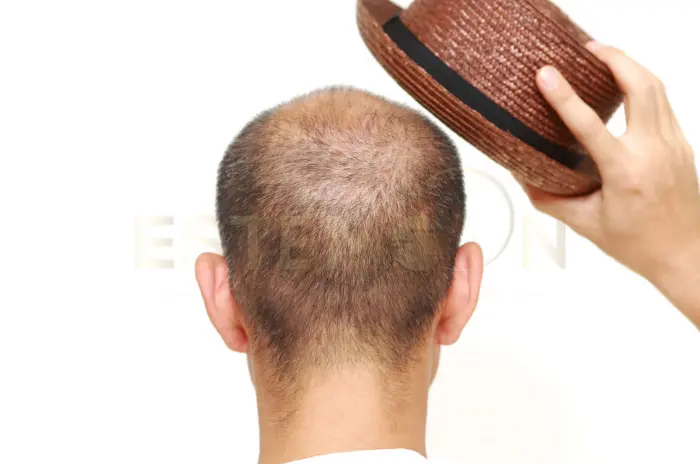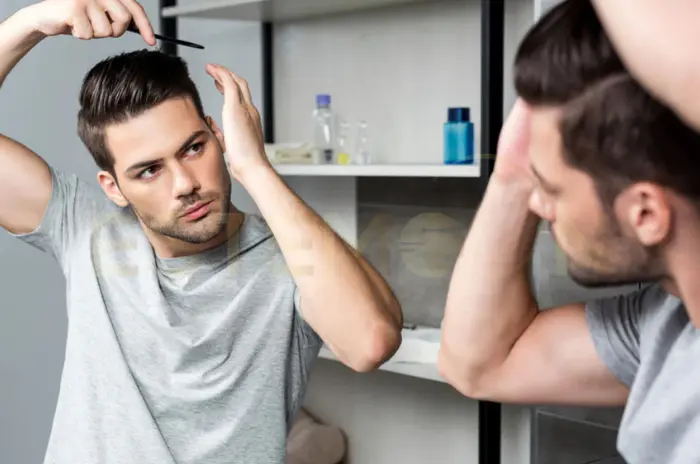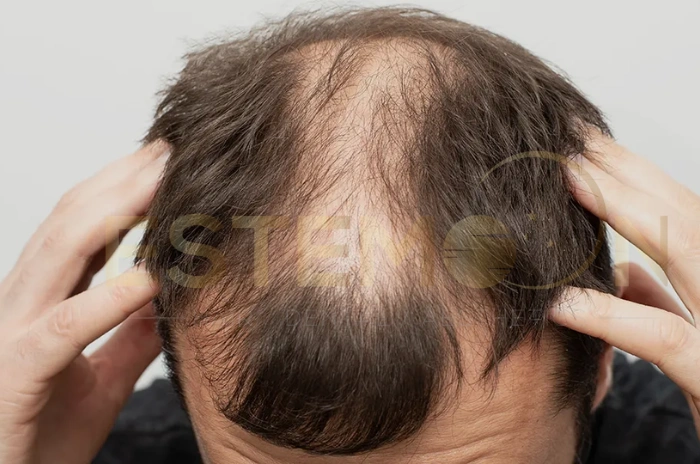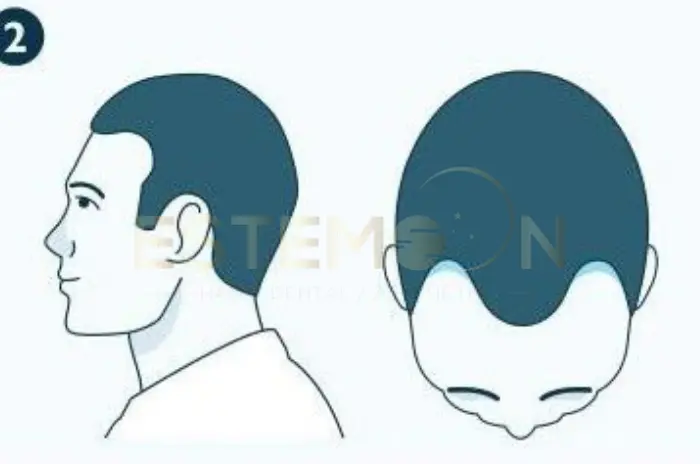Many people worry that their favorite baseball cap or beanie might be thinning their hair. This concern has become so widespread that some avoid wearing hats altogether, fearing permanent baldness. The relationship between headwear and hair health is often misunderstood, leading to unnecessary anxiety.
The truth is more nuanced than most people realize. While hats and hair loss are connected in popular belief, scientific evidence tells a different story. Understanding the real mechanisms behind hair thinning can help you make informed decisions about your daily habits.
This guide examines whether wearing a hat causes baldness, explores the actual causes of hair loss, and provides practical advice for hat lovers.

Understanding the Real Causes of Hair Loss
Hair loss affects millions of people worldwide, but the underlying causes are often misidentified. Male pattern baldness and female pattern baldness are primarily driven by genetics and hormones, not lifestyle accessories. Dihydrotestosterone (DHT), a hormone derived from testosterone, shrinks hair follicles over time in genetically predisposed individuals.
Androgenetic alopecia accounts for approximately 95% of hair loss cases in men and is the most common cause in women as well. This hereditary condition follows predictable patterns, with men typically experiencing receding hairlines and crown thinning, while women see diffuse thinning across the scalp.
Alopecia areata represents another significant cause, characterized by the immune system mistakenly attacking hair follicles. This autoimmune condition creates circular bald patches that can appear suddenly. Unlike genetic hair loss, alopecia areata can affect anyone regardless of family history.
Medical conditions and nutritional deficiencies also contribute to hair thinning. Thyroid disorders, iron deficiency anemia, and vitamin D insufficiency can all trigger excessive shedding. Certain medications, including chemotherapy drugs, blood thinners, and antidepressants, list hair loss as a potential side effect.
Stress-related hair loss, known as telogen effluvium, occurs when significant physical or emotional stress pushes large numbers of follicles into the resting phase simultaneously. This condition typically resolves once the stressor is removed, though recovery takes several months.
Hormonal Influences on Hair Growth
Hormones regulate the hair growth cycle through three distinct phases: anagen (growth), catagen (transition), and telogen (resting). DHT shortens the anagen phase in susceptible follicles, gradually miniaturizing them until they produce only fine, barely visible hairs.
Women experiencing hormonal fluctuations during pregnancy, menopause, or due to polycystic ovary syndrome may notice increased shedding. Birth control pills and hormone replacement therapy can also affect hair density.
The Common Myth of Hats Causing Baldness
The belief that hats cause hair loss likely originated from observational bias rather than scientific fact. People who notice thinning hair often recall wearing hats frequently, creating a false correlation. This myth persists despite lack of credible evidence supporting the connection.
Historical figures and military personnel who wore hats daily did not experience baldness at higher rates than the general population. If headwear truly caused permanent hair loss, entire professions requiring helmets or caps would show universal balding patterns.
The misconception may stem from the temporary flattening effect hats create. After removing a cap, hair appears less voluminous temporarily, leading some to mistakenly believe the hat caused actual loss rather than just compression.
The Oxygen and Blood Flow Misconception
A common variation of the hat myth claims that decreased blood flow to hair follicles results from wearing hats. This theory suggests that compression restricts circulation, starving follicles of necessary nutrients and oxygen. However, scalp blood flow remains largely unaffected by typical hat wear.
The scalp has extensive vascular networks that maintain adequate perfusion even under moderate pressure. Studies measuring blood flow before and after hat wearing show no significant reduction in follicular circulation. For blood flow restriction to cause permanent damage, compression would need to be extreme and prolonged.
Confirmation bias plays a significant role in perpetuating the hats and hair loss myth. Once someone believes hats cause baldness, they interpret any shedding while removing a cap as evidence supporting their belief, ignoring the 50-100 hairs people naturally shed daily.
How Traction Alopecia is Actually Caused
Traction alopecia represents the only legitimate connection between hair loss and what you wear on your head, but it’s far more associated with hairstyles than hats. This condition develops when prolonged, repetitive pulling damages hair follicles, eventually causing permanent scarring and inability to produce new strands.
Ponytail and braids hair loss occurs most frequently in individuals who consistently wear tight hairstyles. The constant tension on the hairline and temples creates mechanical stress that follicles cannot withstand indefinitely. Early stages show broken hairs and small bumps along the hairline.
Traditional hairstyles including tight buns, cornrows, weaves, and extensions pose the highest risk. Dancers, athletes, and professionals who pull hair back tightly for work or performance face increased vulnerability. The frontal hairline typically shows damage first, followed by the temples.
Religious head coverings hair loss rarely occurs unless combined with tight hairstyling underneath. Head scarves, turbans, and other coverings worn loosely do not generate sufficient tension to damage follicles. Problems arise when hair is pulled tightly before covering or when the covering itself is wrapped too tightly.
Mechanism of Traction-Related Damage
Repeated pulling creates chronic inflammation around hair follicles. This inflammatory response damages the follicular structure over months to years of continuous tension. Initially reversible, the condition becomes permanent once scarring develops in the follicle’s stem cell niche.
Early intervention can reverse traction alopecia if caught before permanent scarring occurs. Loosening hairstyles, rotating styling methods, and avoiding tension on vulnerable areas allows follicles to recover over several months.
Most casual hat wear generates nowhere near the tension required for traction alopecia. Tight hats hair loss risk exists only when headwear is extraordinarily constricting and worn for extended periods daily over months or years.
Helmets and hair loss concerns arise primarily in occupational contexts where helmets are worn 8+ hours daily. Even then, this remains uncommon compared to hairstyle-related cases.

Signs Your Scalp Is Irritated by Hats
While hats don’t typically cause permanent hair loss, they can create temporary scalp issues. Scalp irritation from hats manifests as itching, redness, or sensitivity after wearing headwear for extended periods.
Sweat accumulation under hats creates an environment where bacteria and yeast thrive. This can lead to scalp folliculitis, characterized by small, itchy bumps that resemble acne. The condition is particularly common in hot, humid climates.
Contact dermatitis from hat materials affects some individuals with sensitive skin. Dyes, synthetic fibers, and elastic bands can trigger allergic reactions. Symptoms include red patches, scaling, and sometimes small blisters where the hat contacts the scalp.
If you notice increased shedding when removing your hat, this typically represents normal daily hair loss rather than hat-caused damage. Signs of hair loss and shedding that warrant concern include visible thinning patches, receding hairline, or finding clumps of hair rather than individual strands.
Do Hats Cause Hair Loss
The definitive answer is that hats do not cause permanent hair loss in the vast majority of cases. Standard hat wearing does not create the conditions necessary to damage hair follicles or trigger genetic hair loss patterns.
Can wearing a hat cause baldness? No, unless the hat is worn so tightly that it creates chronic traction alopecia, which would require extremely uncomfortable levels of pressure maintained consistently over long periods. Normal hat use, even daily, does not generate this level of sustained tension.
The confusion surrounding do hats cause hair loss stems from misunderstanding correlation versus causation. Many people experiencing genetic hair loss may coincidentally wear hats frequently, but the hat wearing doesn’t cause the loss.
Temporary changes in hair appearance after removing a hat should not be confused with actual loss. Flattened hair, static electricity, and the release of hairs already in the shedding phase create illusions of hat-induced damage when none has occurred.
What the Research Says About Hats and Hair
Scientific literature consistently shows no causal relationship between normal hat wearing and permanent hair loss. Research confirms that wearing a hat causes baldness is a persistent myth without scientific foundation.
The concern about decreased blood flow to hair follicles was directly tested using Doppler ultrasound technology. Researchers measured scalp circulation before, during, and after hat wearing. Even snug-fitting hats produced no meaningful reduction in blood flow.
Temperature studies revealed that while hats do slightly increase scalp temperature, the elevation remains far below levels that would damage follicles. The scalp’s thermoregulatory mechanisms effectively maintain safe temperatures even under insulated headwear.
Dermatologists report that patients frequently arrive concerned about hat-related hair loss, yet clinical examination consistently reveals androgenetic alopecia or other conditions unrelated to headwear.
How to Wear Hats Without Harming Your Hair
While hats don’t cause permanent hair loss, following best practices ensures optimal scalp health. How to prevent hair loss from hats primarily involves maintaining cleanliness, choosing appropriate materials, and ensuring proper fit.
Select hats made from breathable, natural fibers like cotton, linen, or lightweight wool. These materials allow air circulation and moisture evaporation, reducing bacterial and fungal growth that can irritate the scalp.
Proper hat sizing is crucial—your hat should fit comfortably without leaving deep indentations or causing pressure headaches. Wash hats regularly according to material-specific guidelines. Frequent cleaning prevents accumulation of oils and microorganisms that can irritate the scalp.
Remove your hat periodically throughout the day to allow your scalp to breathe. If wearing headwear for extended periods, take 10-15 minute breaks every few hours. Apply minimal product before wearing hats to reduce buildup.
Do Hats Cause Hair Loss: The Truth – FAQ
Is it true that hats cause hair loss?
No, wearing hats does not cause permanent hair loss genetic factors, hormones, and medical conditions are the actual causes.
What are the real causes of hair loss?
The primary causes include androgenetic alopecia, hormonal changes, autoimmune conditions like alopecia areata, nutritional deficiencies, and chronic stress.
How does traction alopecia really cause hair loss?
Traction alopecia develops from prolonged pulling force on hair, typically from tight ponytail and braids hair loss rather than hats, causing chronic follicular inflammation.
How can you wear hats without damaging hair?
Choose breathable, properly-fitted hats, wash them regularly, take breaks during extended wear, and avoid combining tight hairstyles with headwear.
Follow us on social media for updates, tips, and patient success stories:




